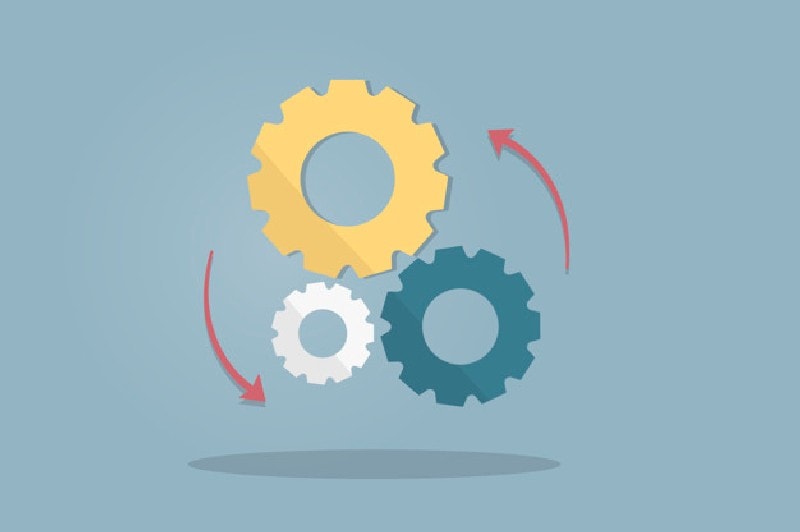Job rotation is a strategy that employers use to rotate employees through different jobs within the organization. Job rotation can provide many benefits for both employers and employees, including increased productivity, improved employee morale, and reduced risk factors at the workplace.
It also enables employees to learn more about various departments within the company and gain insight into different roles and responsibilities. Job rotation can also help employees develop new skills and knowledge, build a better understanding of the company culture, and gain exposure to different working environments.
Table of Contents
What is Job Rotation?
Job rotation is defined as changing the position of an employee within a company to increase the availability of opportunities for growth, learning, and course advancement for an employee and staff retention for a firm.
Employees benefit programs often include job rotation as a way to keep employees engaged and motivated. Job rotation also helps employers identify high-performing or skilled employees who could be promoted or given more responsibilities.
Importance of Job Rotation Program
Has there been a time in your life when you have been simply bored out of your wits at the workplace? The same routine seems tedious and it takes extra effort to do your daily activities and that too by maintaining the same productivity level from before.
Job rotation can be considered a useful strategy where an employee is given new tasks at particular periods so that he does not become lax in his duties. The challenge of taking on new responsibilities works in favor as it increases engagement and flexibility.
There is a misconception that job rotation includes promotion although in some cases it does happen. It is an effective technique and a handy tool that an HR department employs to find the right fit for its employees. It is imperative to implement and carry out a process that strengthens and not weakens the organization.
Job rotation has proved advantageous for both employers and employees alike. The program will give the staff exposure to working in different settings and environments whereas the firm can expand the skill set of its employees for several positions without any immediate costs.
Real-life examples of Job Rotation Programs
Unilever is one of the companies that have implemented the policy of job rotation in its firm to develop the growth of its employees. Intel Corporation is one of the other companies that has decided to implement job rotation to fulfill vacancies in its firm.
It has decided to give its employees an opportunity so that they can find the right fit within the company and do not have to face the problem of employee turnover.
Reasons to implement a policy of Job Rotation
The numerous reasons to implement a policy of job rotations are as follows-
Adds variety and spice –
The main reason to implement a policy of job retention is to add spice and variety to the work format so that the employee does not get bored and starts losing his focus in the workplace. It removes the monotonous nature of the job, minimizes boredom, and deletes complacency.
Distributes physical labor –
The different types of tasks tend to distribute the physical demands of a job
Increase quality gains –
An important reason to implement the policy of job rotation in a workplace is to increase quality gains.
Decreasing fatigue and stress –
When an employee is sitting in the same place every day for a very long period he tends to feel fatigued. The strain and stress become a part of life but when he is on a continuous move it tends to minimize and balance the fatigue and stress from task to task.
Increases productivity and efficiency –
The policy of job rotation is implemented to increase productivity and efficiency in the workplace. New people tend to offer innovative ideas that the previous group might have missed
To improve the skill –
Training is an integral part of the job rotation program as most employees have to undertake them to meet the demands of their new job profile. This helps to improve their skills and increases job flexibility with time
Minimizes turnover –
A job rotation program helps to achieve a high level of satisfaction and this leads to the physical and mental well-being of an employee. A satisfied employee is not going to leave your company at the drop of a hat and thus the firm can easily minimize employee turnover and increase retention.
Explore talents –
The process of job rotation programs helps the company to explore new talents without incurring extra costs.
Back-up –
An important reason for implementing job rotation is to gather the necessary back-ups for various situations that a firm might come across. When you have a strong bench you tend to work with more ease and efficiency and this leads to better productivity
Motivational tool –
The reason why a firm tends to adopt a job rotation program is that it serves as a motivational tool for people who want something new to chew on so that they can keep their creative juices flowing.
Gets an idea about inter-department workings –
The rotation programs are implemented to give an employee the chance to work in different departments and get a fair idea about the working and dealings of inter-departments. This lessens any issues or disputes that might occur because of proper miscommunication.
The key reason for job rotations is succession planning. The company wants to develop a pool of worthy employees so that they can take place of the staff that is either retiring or leaving the company for any reason. It can also help an employee to set up a career path where he will find new and better opportunities for both personal and professional growth. The job rotation system is a chance for the staff to interact with other employees and gain an understanding of how other departments work and handle their work.
Job Rotation Benefits
The benefits of a job rotation plan are as follows-
- Exposes employees to different departments: Job rotation exposes the employees to different departments and numerous operations. This allows the manager to explore hidden talent and find the best worker for the job he has in mind.
- Job rotation creates better opportunities to learn different employee skills: It is also beneficial for the employee as he gets the chance to explore and identify his interest so that he can pursue them further.
- Rotating employees reduces job burnout: Job rotation helps to reduce boredom so that the employees become more engaged in their new work surroundings. Mixing responsibilities breaks the monotony and of course disengagement at the workplace.
- Offers a flexible workforce: The strategy has proved advantageous as it encourages development in an employee. The staffs get exposure to different tasks and learn how to manage them best. When a person finds opportunities for new skills and knowledge at his workplace by tending to various jobs it leads to the overall development of an employee.
- Provides necessary breather from one job- An important benefit of the job rotation policy is that it gives a worker a break if he has been in a strenuous job. Rotation helps him to get the necessary breather so that he can be always fresh at his task. Remember fresh perspective can result in innovative ideas, problem-solving and high-efficiency levels.
- Helps organizations in choosing the best employees for specific tasks: Job rotation is beneficial for an organization as it helps it to find the best possible candidate for a given task by evaluating its weaknesses and strengths through various job profiles.
- Optimizes the backup plans: Employee rotation acts as a backup in case an employee leaves the firm suddenly. As a firm has a pool of other employees to take the place of the one that is leaving the firm it does not have to scramble and hire another staff at the drop of a hat. It minimizes the need for recruiting and thus saves effort, time, and money for a company.
- Improves cross-training: An important advantage of job rotation is that it can serve as a basis to conduct cross-training and thus offer more opportunities to the employees.
Disadvantages of Job Rotations
The various disadvantages of a job rotation policy are as follows-
- Can be time-consuming & expensive: Some firms consider the process of job rotation time-consuming and expensive. The HR department has to be on its toes to shift employees from one position to another. They might have to undergo training to fit the new profile and thus resulting in increased expenses for the company.
- Not applicable in every industry: The policy of job rotation is not feasible for every industry or company and thus can prove a deterrent if not thought about properly beforehand.
- It’s beyond the comfort zone of some employees: Some employees want to play safe and are more secure if they adhere to a particular job profile for a lengthy period. When they are a part of a rotation policy they have to make changes as their comfort zone has now shifted against them. This results in disgruntled employees who are unwilling to learn new ideas and technologies and ultimately become stressed and lose their efficiency levels.
- No guarantee: An organization believes that the policy of job rotation will fix all its problems but it is not so. It does not guarantee employee engagement or job satisfaction as it might have been the result of some other cause.
- Causes confusion: Regular job rotation can cause confusion and this could lead to mistakes and thus prove harmful to a company.
- May negatively affect efficiency: Frequent interruptions can minimize efficiency and productivity gains.
- Lack of trust and compatibility: The continuous upheaval inside a team does not foster trust and compatibility and thus coping with each other’s workings and moods becomes more difficult.
Here is a video by Marketing91 on Job Rotation.
What are the Best Practices for Job Rotation?
Some simple steps can prove a boon if a firm is interested in implementing a policy of job rotation. Just follow them diligently by keeping up with the following instructions-
- Having a proper job rotation plan: Make a proper plan because you need to know your employees as well as the job profiles intimately. Businesses must take into confidence their employees and share with them the knowledge about why and how it is going to implement the job rotation program. Better share the advantages and the reason for this process so that everyone is on board with it
- Training employees for the rotation program: Make sure the firm has both an internal and external trainer who can plan and monitor every step diligently
- Human Resource Management should document the rotation program: Document the program so that both the employer and employee can know about the different aspects of job rotation and how they will impact the company and its workforce
- Taking the consent of moving employees: If possible take the consent of your employee who wants to be a part of the job rotation process. Remember volunteering for it will increase employee engagement.
Conclusion!
When employers rotate jobs, they must ensure that the training process is thorough, efficient, and well-planned. Job rotation can result in increased satisfaction among employees due to variety and greater job security.
Job rotation can also help employers identify potential leadership candidates, sharpen skills, and reduce the possibility of burnout. Ultimately, job rotation can be a positive experience for both employers and employees.
Liked this post? Check out the complete series on Human resources


